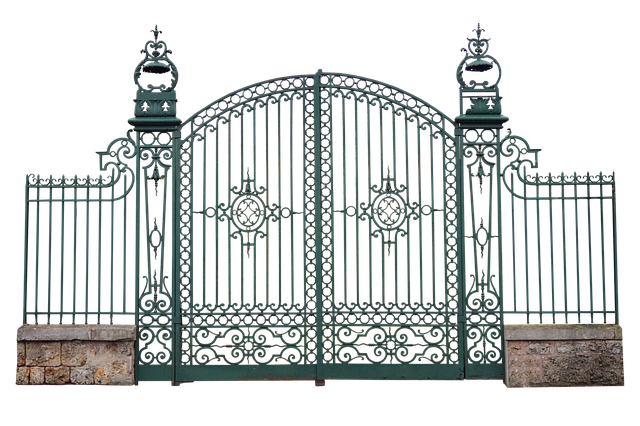For New Bedford, Massachusetts homeowners looking to enhance their outdoor spaces, installing a fence offers both privacy and security. This comprehensive guide walks you through the DIY fence installation process from start to finish. Learn how to prepare your yard, select durable materials that fit your aesthetic, design your fence layout, dig post holes with precision, erect sturdy posts and rails, and add essential features like gates. By following these expert tips, you’ll create a beautiful, long-lasting fence tailored to your property’s unique needs.
- Prepare Your Yard for Fence Installation
- Choose the Right Fencing Material
- Plan Your Fence Layout and Design
- Digging and Marking Post Holes
- Install Fence Posts and Rails
- Add Gates, Fences, and Final Touches
Prepare Your Yard for Fence Installation
Before you begin installing your new fence, preparing your yard is a crucial step. Clear any debris, such as branches or old vegetation, that might interfere with the process. Mark out the perimeter of your desired fence line using string and stakes to ensure a straight and consistent path. Consider the layout of your property and where you want the fence to be positioned—near trees, garden beds, or other structures. This planning will help guide the placement of posts and ensure a neat, well-designed fence.
Once marked, excavate the ground along the fence line to accommodate the depth of your fence posts. Digging holes at the correct depth ensures stability and longevity for your fence. It’s important to check local regulations regarding fence installation, especially in urban areas like New Bedford, where space is limited and certain restrictions might apply. Proper preparation will make the installation process smoother and result in a more durable fence.
Choose the Right Fencing Material
When it comes to DIY fence installation, selecting the appropriate fencing material is a crucial first step. For New Bedford homeowners, considering the local climate and weather patterns is essential. Wood is a popular choice due to its natural aesthetic appeal, but it requires regular maintenance to protect against rot and pests. Vinyl fences are low-maintenance alternatives, offering durability and resistance to weathering. They come in various styles, from traditional picket fences to more modern designs, catering to different tastes.
Metal fences provide a robust and long-lasting solution, ideal for areas prone to strong winds or harsh winters. However, they can be more challenging to install and may require professional help for proper alignment and stability. Additionally, the cost of metal fencing might be higher than other options. Always assess your budget and the specific needs of your property before making a decision, ensuring the chosen material aligns with both functionality and aesthetics.
Plan Your Fence Layout and Design
Before breaking ground on your DIY fence installation project, taking the time to plan your layout and design is essential. Start by visualizing where along your property line the fence should be placed, keeping in mind local regulations regarding set-backs and permitted materials. Consider factors like aesthetics—do you want a traditional wooden fence or something more modern?—as well as functionality; will the fence need to accommodate pets or provide additional security?
Create sketches or use online tools to map out different designs, experimenting with various heights, styles, and configurations. Once you’ve finalized your preferred design, obtain any necessary permits from New Bedford city hall before gathering your materials and beginning construction.
Digging and Marking Post Holes
Before installing any fence, digging and marking post holes is a crucial step. New Bedford, Massachusetts homeowners should start by assessing their yard and determining the fence’s layout and length. Once the design is finalized, use measuring tapes to mark where each post will go. These marks should be precise as they guide the placement of your fence posts, ensuring a straight and sturdy structure.
Next, dig holes at these marked locations using a post-hole digger. The depth of the holes should be at least one-third the height of the fence post, and the width should allow for the proper placement of the post, typically around 8 inches in diameter. Filling the holes with concrete ensures stability, so pour concrete into each hole, making sure it fills all cavities and levels with the ground’s surface. Let the concrete set for at least a day to solidify before attaching the fence panels or rails.
Install Fence Posts and Rails
When installing your fence posts and rails, ensure they’re securely anchored into the ground. This involves digging deep enough holes for the posts to provide stable support. Use a level to check that the rails are straight and parallel with each other.
Space the posts evenly along your desired fence line, typically at intervals of 6 to 8 feet. The rail should be securely attached to both posts using brackets or nails, following the manufacturer’s instructions for proper spacing and fastening.
Add Gates, Fences, and Final Touches
Once your fence is installed, consider adding gates for easy access in and out of your property. Choose a gate style that complements your fence design—swing gates work well with most fences, while sliding gates can be a modern and space-saving option. Ensure they are securely attached to the posts using hinges and latches.
Finally, add any desired final touches like fence posts caps or decorative lighting to enhance the look of your new fence. Post caps not only provide a sleek finish but also protect the tops of the posts from rot and damage. Lighting can improve security and create a beautiful ambiance around your home, especially during evening hours.
